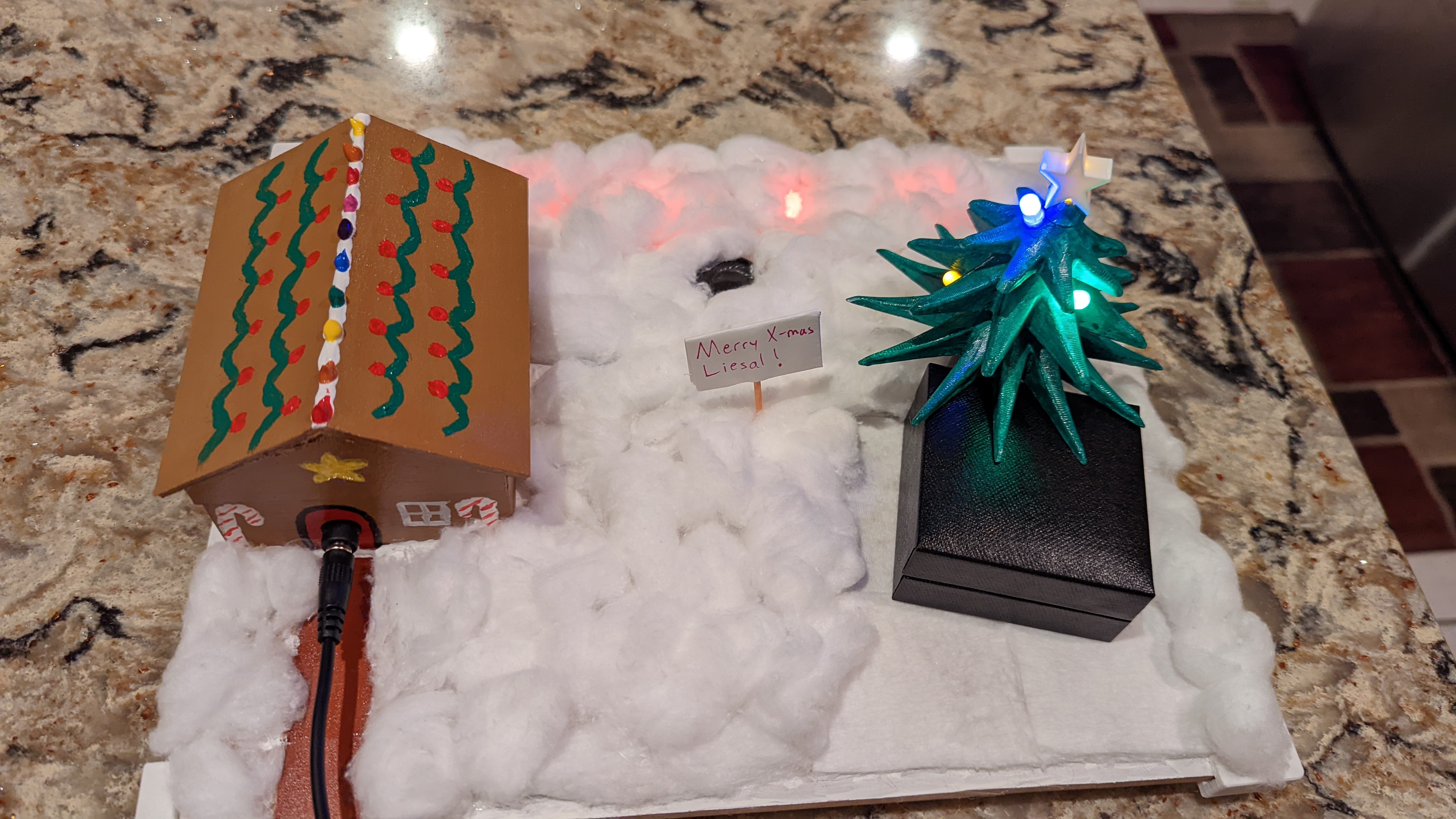Christmas Scene

Christmas Gift
When I found a gift for my friend in the Fall, I wanted to put more thought into it since the gift itself is small. So, I came up with the idea of adding electronics to create a nice presentation for the necklace.

I thought a fun, cute way to present the gift was to create a little Christmas scene and have the gift be under the Christmas tree. The idea changed a lot over time, especially considering the fact that I needed to ship it in a package. So, I scaled down my idea and tried to keep things simple to ensure nothing much could go wrong. A clever way for me to conceal the electronics was to tape everything down, cover it in white gesso, and put the main components into a gingerbread house that I designed and 3D printed. The inner workings are shown on the left. I soldered an Arduino Nano, LED strip, 5mm LEDs, a speaker connected to an amplifier board, and a barrel jack to a PCB inside the gingerbread house.

Aside from the gingerbread house, I also designed and 3D printed the tree. It's made up of 4 layers, each one with holes to fit 5mm LEDs that I had from an Arduino kit. The top layer is a small tree tip for an LED that is covered with a star printed with 0% infill density to have some light bleed through. I hot glued everything together, and decided to design and 3D print some feet at the corners to not only have smooth corners, but to have some elevation to make it easy to pickup. All that was left was to glue on some cotton balls, use gesso for parts of the MDF board that weren't covered, and put a sign as a final touch.
A video of the scene playing is shown on the left, though the sound is low. The music playing is a recording of me playing "We Wish You a Merry Christmas", followed by part of the song, "Ashes of Dreams" from the video game, Nier Replicant. The LED strip is made up of WS2812B LEDs controlled using the FastLED Arduino library. The audio recordings were converted to be .wav files to be used with the TMRpcm library and were read using an SD card reader.